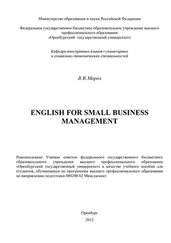COMMUNICATION FOR INTERNATIONAL BUSINESS SECRETS
Rus Slater

William Collins
An imprint of HarperCollins Publishers
1 London Bridge Street
London SE1 9GF
WilliamCollinsBooks.com
This eBook first published in Great Britain by William Collins in 2020
First published in Great Britain in 2020 by HarperCollins Publishers
Published in Canada by HarperCollins Canada . www.harpercollins.ca
Published in Australia by HarperCollins Australia . www.harpercollins.au
Published in India by HarperCollinsPublishersIndia . www.harpercollins.co.in
Copyright © HarperCollins Publishers 2020
Rus Slater asserts the moral right to be identified as the author of this work
A catalogue record for this book is available from the British Library
All rights reserved under International and Pan-American Copyright Conventions. By payment of the required fees, you have been granted the non-exclusive, non-transferable right to access and read the text of this e-book on-screen. No part of this text may be reproduced, transmitted, down-loaded, decompiled, reverse engineered, or stored in or introduced into any information storage and retrieval system, in any form or by any means, whether electronic or mechanical, now known or hereinafter invented, without the express written permission of HarperCollins.
Source ISBN: 9780008389888
Ebook Edition © January 2020 ISBN: 9780008133849
Version: 2019-11-19
Contents
Cover
Title Page
Copyright
Introduction
1 Listen and look
1.1 Listen to and for the ‘prepared speech’
1.2 ‘Look’ for the indicators of cultural differences
1.3 Check for real understanding
1.4 Learn about their situation
1.5 Beware generalizations
2 Say and write
2.1 KISS – Keep It Short and Simple
2.2 Explain TLAs (Three Letter Acronyms)
2.3 Avoid idioms
2.4 Beware interpretation errors
2.5 Beware translation errors
2.6 Be aware of cultural/national differences between speakers of the same language
2.7 Consider accents and dialects
2.8 People’s names
2.9 Test readability
3 Technology and media
3.1 Written communications
3.2 Face to face verbal communications
3.3 Using the phone
3.4 Video calls
3.5 Conference calls
3.6 ‘Screen-sharing’ calls
4 Taking the environment into account
4.1 Time zones and time differences
4.2 Local working practices with regard to time
4.3 Local office facilities
4.4 Local climatic conditions and seasons
4.5 Local purchasing capacities
4.6 Local attitudes to family, friends and others
5 Netiquette
5.1 Get your salutation right
5.2 Prof reed you’re email
5.3 Write ‘good’ subject lines
5.4 Use the timing capacity
5.5 Copying and read receipts
5.6 Use a signature block – it helps
5.7 Write and read emails wisely
5.8 Consider ‘social media’
6 Intercontinental differences
6.1 Be honest
6.2 Communicating with Chinese business people
6.3 Communicating with Indian business people
6.4 Communicating with British business people
6.5 Communicating with American business people
6.6 Communicating with German business people
6.7 Communicating with Japanese business people
6.8 Communicating with Russian business people
7 Communicating with a remote team
7.1 Have a communication plan
7.2 Create and maintain a virtual presence
7.3 Use the technology to replicate the communication of an F2F team
7.4 Be a good host
7.5 ‘Slow down to speed up!’
7.6 Run good virtual team meetings
7.7 Communicate with your people’s other (local) managers
7.8 Think ‘Goose’!
7.9 Look for the signs that it is all going wrong
Footnotes
Jargon buster
About the Book
About the Author
About the Publisher
Communication is critical, communicating intercontinentally is complex
The world is getting smaller. Most of us will probably have clients, or suppliers, in another country at some time or other.
And if we don’t we’ll probably belong to a business community of practice that is global. The way we communicate across these boundaries can make the difference between success and failure.
With this book you should be able to communicate effectively with colleagues, suppliers and customers who come from different cultures, speak different native languages and live in different environments to your own. The chapters are:
| 1 |
Listen and look; seek first to understand: with international communication there are some extra critical elements to this; |
| 2 |
Say and write: nine simple and straightforward ‘rules’ to help you to get your message across to others across the seas; |
| 3 |
Technology and media: how to make contact in order to be as effective as possible; |
| 4 |
Taking the environment into account: this helps you to consider the differences in the working environments that exist between where you are and where they are; |
| 5 |
Netiquette: eight secrets to help you to master the mouse; |
| 6 |
Intercontinental differences: this chapter aims to try to highlight some of the major cultural differences between people from different nations, without slipping into racial stereotypes; |
| 7 |
Communicating with a remote team: this chapter aims to distil the best practice for managing a remote team. |
It is easy to cause offence if you don’t understand the people you are communicating with. But if you understand them, you can be as successful as if you were communicating with your own family.

Communication is a two-way process. Many books on the topic, and many people, will start addressing the issue of communication by looking at the matter of transmitting information to another party. But receiving information, and understanding the environment in which your message is received, is critically important. This is particularly vital when you are trying to get a message across to someone who doesn’t speak the same language as you as their native tongue. Or someone who is in a completely different time zone or working environment. You may not be able to see each other so there may be no non-verbal cues to their real meaning. This chapter aims to help you to avoid some of the more common errors in international communication.
1.1
Listen to and for the ‘prepared speech’
When people are communicating in a non-native language they often prepare far more, and are much less spontaneous, than if they were talking in their mother tongue. One common element of this is a prepared speech which they may actually read from a script or they may have rehearsed to the point of memory.
There are several ways that you can tell when someone is reciting a prepared speech:
▪ They tend to plunge straight in with the minimum of ‘phatic’ communication.
▪ They tend to speak quite quickly with few pauses or hesitations.
Читать дальше














